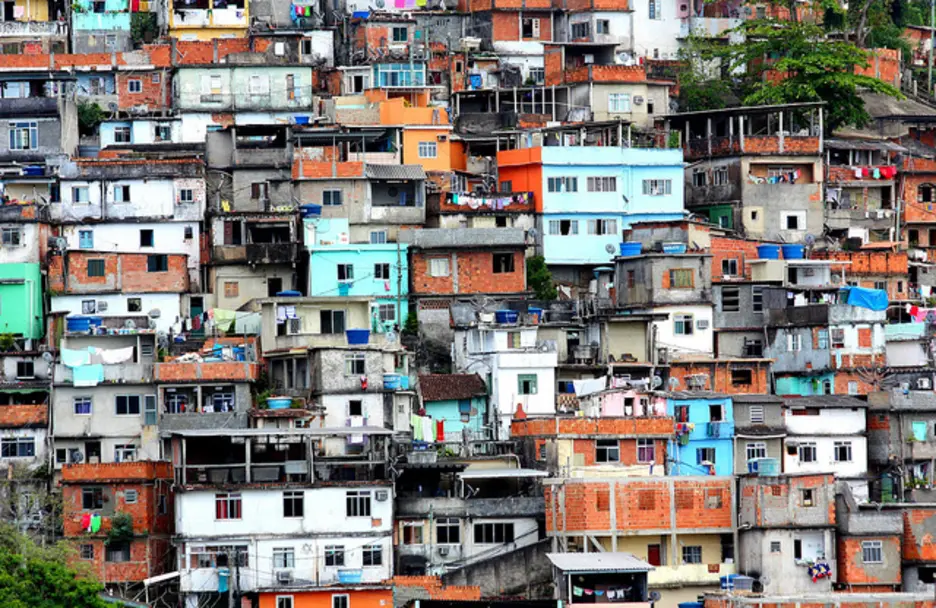Something New in BOP Housing

[caption id="attachment_966" align="alignright" width="300"] Favéla Do Prazères, Rio de Janeiro, Brazil
Favéla Do Prazères, Rio de Janeiro, Brazil
Credit: Dany13[/caption]
The opportunities of these markets are immense. A 2010 global study by JP Morgan projected that BOP housing markets worldwide offer the potential to generate $177-648 billion in profits over ten years, constituting the largest impact investment sector – as compared to microfinance, primary education, maternal health and rural water supply. In LAC, where housing markets are predominantly urban, the BOP invests approximately $56.7 billion annually in housing. While there are several types of tenure such as renting, sharing or owning, home ownership in the region is high, with declared rates above 70 percent, showing that LAC’s most urgent housing deficit is qualitative, not quantitative. In Peru, for example, the quantitative shortage at 14% contrasts with a much higher qualitative shortage of 41%. As a consequence, the demand for improved housing (expansion, enhancements or repairs) is vast. Nevertheless, these markets are largely underserved by conventional housing products and services, leaving most low-income families on their own – typically undertaking housing construction in incremental stages, as resources become available.
Identifying a niche market of low-earning public employees left outside public housing programs, FOMEPADE has found both a large source of demand and cooperation from employers that allow access to salary histories and direct payroll deductions, thereby reducing credit risk and transaction costs. FOMEPADE’s strategic partners include a uniquely Mexican breed of social housing developers that are certified by federal authorities to build very basic, low-cost housing for low-income families. These “core house” structures cost under $10,000 and follow a modular design, facilitating rapid, low-cost assembly as well as future room additions. A further component of FOMEPADE’s value chain involves government subsidies, which reduce housing costs by up to 40 percent.
So, what’s new in BOP housing?
 In a study just published by the Opportunities for the Majority (OMJ) sector at the Inter-American Development Bank (IDB), I have highlighted several promising approaches to penetrating the BOP housing markets in LAC, based on 11 cases from Colombia, Mexico, Nicaragua, Paraguay, and Peru. Among the private sector actors included in the study are housing developers, building material suppliers, housing NGOs, and – of course, financial institutions. This latter category includes a host of microfinance institutions as well as non-traditional lenders, such as CEMEX´s Patrimonio Hoy, that have tailored loan products to support home improvements or incremental housing construction. The “home improvement” business model includes compelling examples showcased in the study that sought to combine housing finance with construction services – including technical assistance (e.g., design, budgeting, project oversight), linkages with materials suppliers and/or qualified construction labor – creating a more substantial value chain for customers. A recent posting on NextBillion.net addresses many of the challenges and opportunities faced by the home improvement – or “housing microfinance” – approach to BOP housing.
In a study just published by the Opportunities for the Majority (OMJ) sector at the Inter-American Development Bank (IDB), I have highlighted several promising approaches to penetrating the BOP housing markets in LAC, based on 11 cases from Colombia, Mexico, Nicaragua, Paraguay, and Peru. Among the private sector actors included in the study are housing developers, building material suppliers, housing NGOs, and – of course, financial institutions. This latter category includes a host of microfinance institutions as well as non-traditional lenders, such as CEMEX´s Patrimonio Hoy, that have tailored loan products to support home improvements or incremental housing construction. The “home improvement” business model includes compelling examples showcased in the study that sought to combine housing finance with construction services – including technical assistance (e.g., design, budgeting, project oversight), linkages with materials suppliers and/or qualified construction labor – creating a more substantial value chain for customers. A recent posting on NextBillion.net addresses many of the challenges and opportunities faced by the home improvement – or “housing microfinance” – approach to BOP housing.
The most cutting-edge business models included in the OMJ study are the ones that aim to provide a complete housing solution, involving newly-built homes on titled land with basic infrastructure and utilities included. One of the models applies microfinance principles to traditional mortgage lending, resulting in a type of “micro-mortgage” that’s accessible to low-income clientele in Colombia. A second model employs a “rent-to-own” scheme whereby qualifying families rent new properties for 2-3 years, establishing a payment history and setting aside sufficient capital to make a down-payment on their future mortgage.
Each of the four business models (representing the 11 projects) detailed in the report is directed to a particular segment of the BOP market, involving products and services tailored to this group, and converting market challenges into creative strategies and solutions. To those seeking new business opportunities – these examples provide helpful insights into reaching these relatively untapped markets. And to impact investors – keep your eyes on these ventures, as they’re taking off!
We invite readers to post their comments and questions related to the study and share any promising practices in BOP housing that are either similar to or different from the cases presented in the report.
LIKE WHAT YOU JUST READ?
Subscribe to our mailing list to stay informed on the latest IDB Invest news, blog posts, upcoming events, and to learn more about specific areas of interest.
Subscribe



